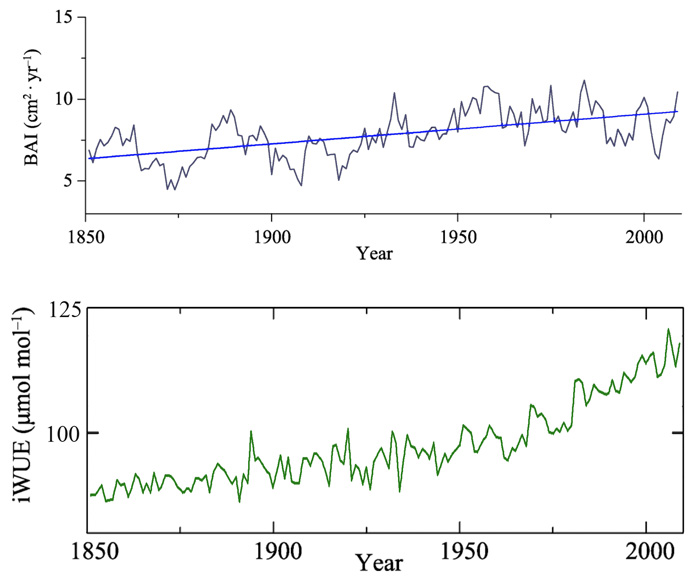| Tweet | Follow @co2science |
Paper Reviewed
Wang, Y., Zhang, Y., Fang, O. and Shao, X. 2018. Long-term changes in the tree radial growth and intrinsic water-use efficiency of Chuanxi spruce (Picea likiangensis var. balfouriana) in southwestern China. Journal of Geographical Sciences 28: 833-844.
Writing as background for their study, Wang et al. (2018) state that increased atmospheric CO2 concentrations are "expected to improve the intrinsic water-use efficiency (iWUE) levels of trees." In turn, they note that as iWUE improves, tree growth typically is enhanced as well. However, they add that relatively few studies have examined these relationships in natural forests in the field over long time scales. Thus, it was their objective to contribute to this small, but growing, body of research.
Focusing on the Sichuan Province of southwest China (31.52°N, 101.7°E), Wang et al. obtained 56 increment cores from 25 healthy Chuanxi spruce (Picea balfouriana) trees. Then, using standard dendrochronological procedures, the four Chinese scientists were able to create a 159-year reconstruction of tree growth (basal area increment; BAI) and iWUE for the period 1851-2009, which reconstructions are illustrated in the figure below.
And what did the records reveal?
In the words of the authors, Chuanxi spruce trees displayed "a positive response to rising concentrations of CO2." More specifically, they found that BAI increased by 46.6% and iWUE levels by approximately 30% since 1851. They also found that tree radial growth "occurred in parallel with increased iWUE levels, and [that] atmospheric CO2 concentration was correlated with iWUE," which correlation indicates that "tree radial growth benefited from increasing atmospheric CO2 levels through the so-called CO2 fertilization effect."
Given such positive findings, Wang et al. conclude that "spruce forests benefit from the increasing CO2 in the atmosphere in the humid areas of southwestern China." And they will likely continue to do so in the future, as the air's CO2 concentration continues to rise.

Figure 1. Trends in basal area increment (BAI) and intrinsic water use efficiency (iWUE) of Chuanxi spruce trees from southwestern China for the period 1851-2009. Source: Wang et al. (2018).




